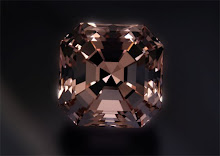
They began working the space with pickaxe’s to break up the hardened surface. Then, methodically shoveled off the overburden until the ‘contact-zone’ containing the gem bearing gravels were reached. In some pits, this may have only been 1/4 metre, and then in other locations it was over 2 metres.

Once the gravel layer was located, the miners worked more cautiously, not wanting to throw into the massive dirt piles any valuable pebbles. The gravel layer was placed into hand constructed sieve boxes as shown below, and vigorously jerked back and forth so that the non-desirable dirt and small pebbles fell to a pile.
 Here's Hubie workin' the sieve with a local miner. It was a messy business but we couldn't wait until it was finished to look over the gravels.
Here's Hubie workin' the sieve with a local miner. It was a messy business but we couldn't wait until it was finished to look over the gravels. 
And then, every once in a while, we'd find something worthwhile. The larger is a Rhodolite, the smaller appears as a Malaya colored Garnet. Further testing will verify this was accurate.

Sherris, sitting next to her pile of pebbles. In the heat, we tried to find ourselves working the pile in some shade as it was borderline unbearable.


No comments:
Post a Comment